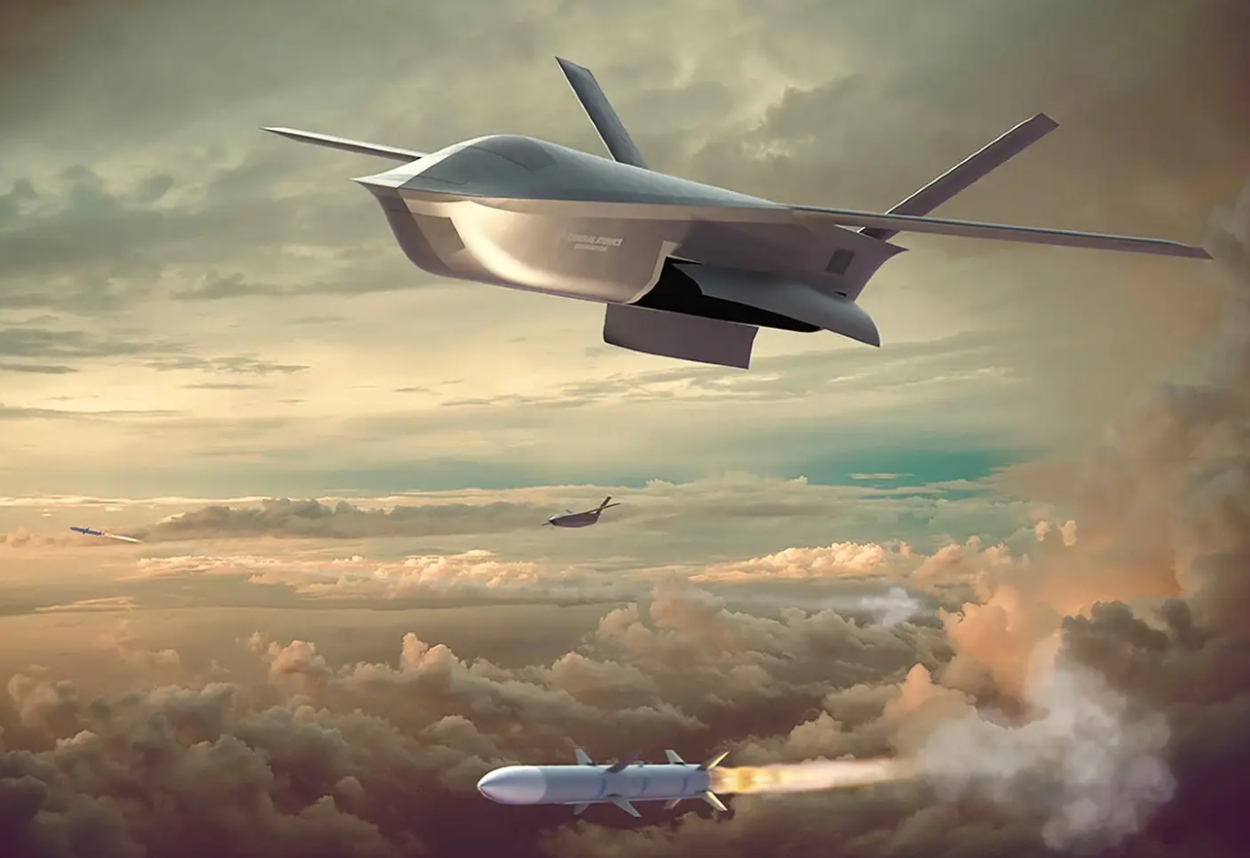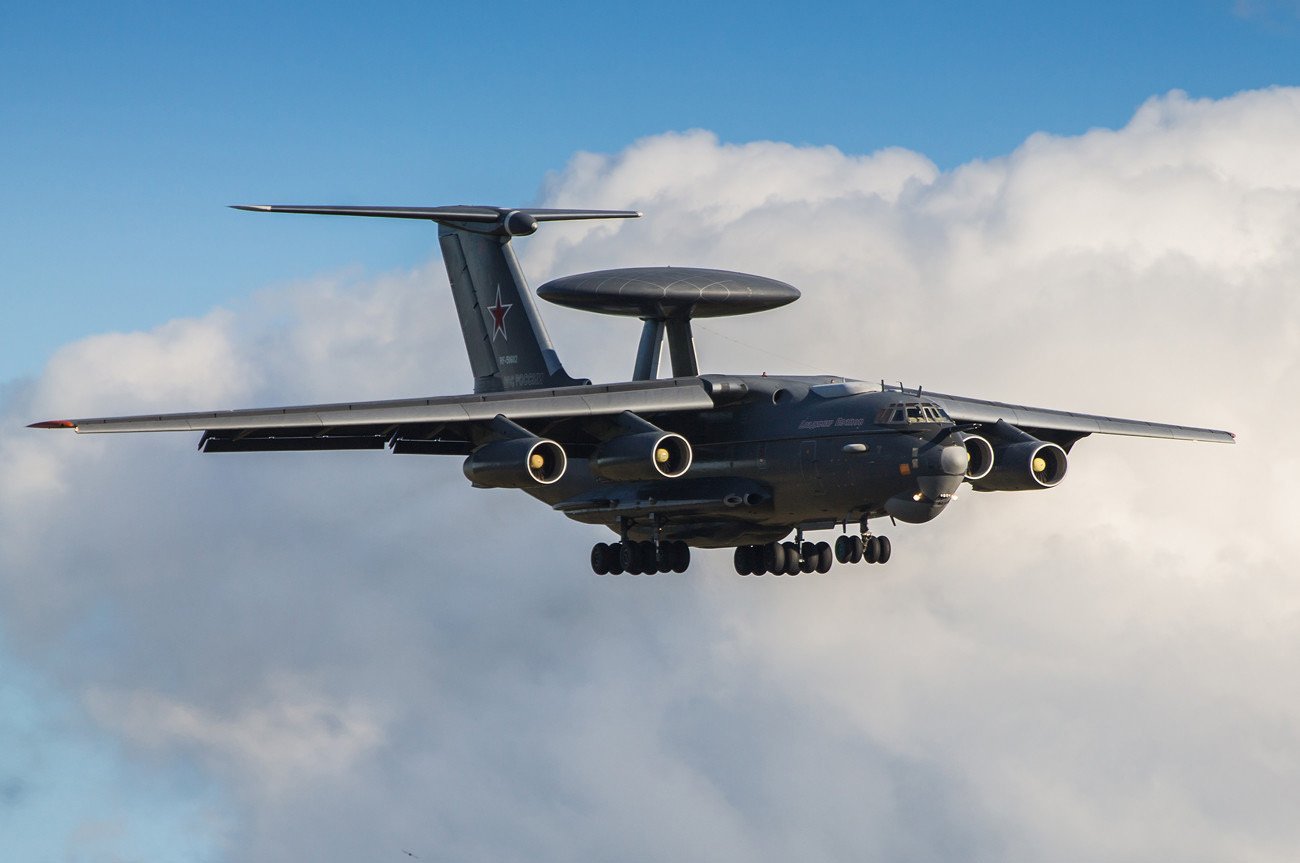Russians are being blinded from monitoring Ukrainian air space after losing another A-50 AWACS. An Indian expert suggests that the footage of A-50 Beriev ‘flying radar’ being hit indicates that Ukrainians are targeting Russian assets flying at a distance of over 200 km by modifying a drone to receive targeting data from Western surveillance and launching a heat-seeking missile.
The mechanism with which Ukraine has been able to shoot down the second Russian ‘flying radar’ based on the Ilyushin Il-76 aircraft within just over a month has been carefully kept under the wrap.
But the video points at Ukraine operationalizing something akin to the American Defense Advanced Research Project Agency (DARPA)’s “Project Longshot.” In 2023, the Longshot project reached its third and final demonstration and test phase.
Under the project, an air-launched drone that will carry air-to-air missiles is being developed. The drone will be carried by fighter jets, enabling the aircraft to impact targets well beyond the current missile’s range.
A retired Indian Air Force officer said on X that the Russian Air Force is no fool to put their vital air assets in harm’s way.
“Are the Russians such big fools to continue targeting their vital air assets in a blue-on-blue deal, or do the Ukrainians now have a drone modified to interdict 200 km plus near Russian air assets, clinically cued and steered with targeting data from Western LR (long range) surveillance, and launch a heat-seeking Stinger or an ASRAAM with deadly accuracy,” said Sameer Joshi, a retired Indian Air Force Mirage 2000 pilot.
He added: “The Ukrainian Longshot concept may be a reality IMO (in my opinion). In this video, the Russian SAM may have been launched to shoot down the Ukrainian UAV poised for an ambush of the A-50 recovering back.”

Talking to the EurAsian Times, Joshi said: “It (Project LongShot) will help create an offensive robotic component in front of manned platforms, with collaboration happening through a human-machine teaming layer. Here, UAVs with advanced autonomy and AI piloting will compete with other uncrewed platforms and human fighter pilots in real-time.”
Joshi is the CEO of NewSpace Research and Technologies, a private firm that has supplied the world’s first high-density swarm drone system to the Indian Army.
Joshi says that the project will increase the survivability of manned platforms by allowing them to be at standoff ranges far away from enemy threats while air-launched LongShot UAVs efficiently close the gap to take more effective missile shots.
The video of the shooting indicates that the aircraft was flying at a low altitude, around 1,000 feet, had detected the missile, and was undertaking evasive maneuvers. Speculations have been rife about the air defense system being used to bring down the jumbo aircraft since the time Ukraine downed the first A-50 in January.
During the same attack, a Russian Ilyushin Il-22 command plane was also damaged. As reported by the EurAsian Times then, some experts suggest that Ukrainians deployed one of their ‘Franken’ surface-to-air missiles, created by mating Patriot missiles with their S-300 systems, to achieve spectacular success.
Meanwhile, as speculated by many military experts, Joshi called the chance of mated S-200 SAM & S-300 FCR system behind the shootdown of the A-50 bleak. The former IAF official suggested that it was impossible for a tracking radar to see beyond 112 km “while the geographical location of any Ukrainian SAM would be over 200km plus.”
Ruling out the use of S-200 mating with S-300 or Patriot, Joshi says that the facts gleaned through the video point to a different direction.
“The S-200 would have lost the guidance link as soon as the A-50 was below 2 km altitude at the 200 km plus radar horizon available from the Ukrainian FCR,” he says while adding: “The A-50s final altitude was around 1 km, and it was diving down at 875 mph ground speed. The S-200 doesn’t have active guidance in the terminal phase. So NOT a S-200, neither a Patriot SAM.”
He asserts that the Ukrainians were “covering up” another mechanism of engagement that they have been able to put in place to counter vital Russian air assets in depth. Nonetheless, the shooting was a testament to “Ukrainian ingenuity and tardiness of Russian Operational Security” to have allowed this to happen after the loss of the first A-50 some days back.
Over 40 A50s were built in the 1980s and 1990s, but as of 2022, only about 16 remained, with nine to eleven being in flyable condition. Since late 2022, reports have indicated that only three of these aircraft are still “fully mission capable” (FMC), meaning all its equipment is completely functioning. This is because they were used extensively in the early months of the Russian invasion of Ukraine.
A-50 is similar to the American E-3 that flies along the front line to scan the sky for enemy aircraft and missiles. The aircraft can perch itself high above the ground, providing a better picture of the aerial battlefront.
Since late 2023, the Ukrainians have been meticulously targeting Russian Air Force installations across the Russian-occupied Crimea peninsula, knocking out several ground-based radars. The Russians’ hands were forced as they ordered one of their A-50Us to get airborne to cover the gap in their radar coverage.
Considering the aircraft had “insufficient” equipment” for the task, an Il-22M airborne command post accompanied it. Also, because of the short radar range of the A-50U, it had to operate close to the frontline (as close as 80-90 kilometers from it) to detect incoming Ukrainian aircraft and missiles.
After the shooting of the first A-50 in January, the Russian Air Force was reported to have been left with two A-50Us, while four others needed upgrades or overhauls. It was thought that Russia was unlikely to risk its last two A-50s to provide radar coverage over Crimea. However, the bringing down of the second ‘Flying Radar’ suggests otherwise.
Blinding The Bear
Accidental fratricide was another possibility thought to be behind the shootdown of the A-50U aircraft near the Sea of Azov on February 23.

Rybar, a leading Kremlin-affiliated military analysis forum, while propounding the theory of friendly fire, said the “Russian air defense crew may have been misled by enemy missiles, leading to accidental targeting of the A-50U.”
“It is impossible to rule out the deliberate launch of anti-aircraft missiles by the enemy (such as a modified S-200 Vega) towards our aircraft to provoke Russian air defense into returning fire,” Rybar added. The Russian air defense crew “mistakenly identified the A-50U as an enemy target and engaged it,” adding that there have been “past cases of misidentification.”
Ukraine maintains that the shootdown was a result of a joint operation conducted by the Armed Forces of Ukraine (AFU) and its Main Directorate of Intelligence (GUR).
Ukraine has claimed that they destroyed an “A-50 long-range radar detection and control aircraft worth $330 million.” They also released maps showing the approximate location of the shootdown.
- Ritu Sharma has been a journalist for over a decade, writing on defense, foreign affairs, and nuclear technology.
- The author can be reached at ritu.sharma (at) mail.com
- Follow EurAsian Times on Google News




